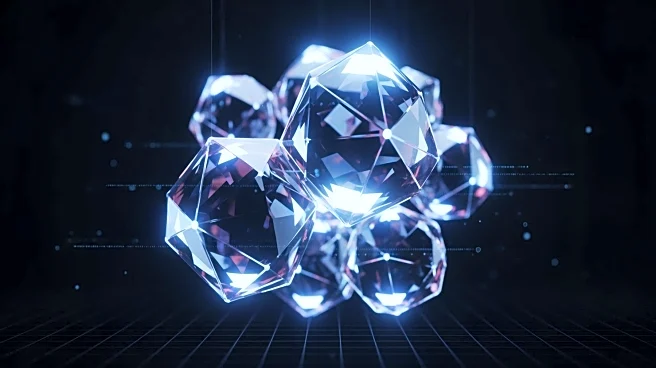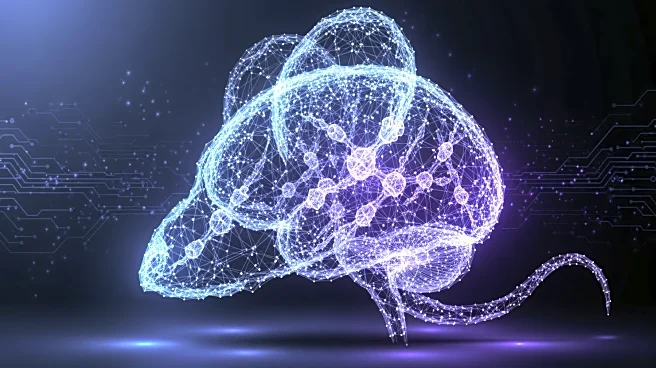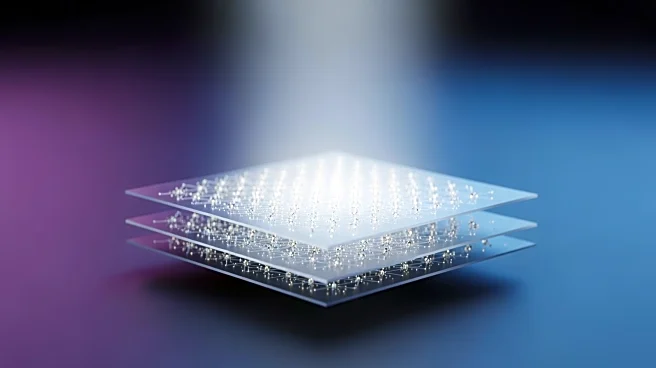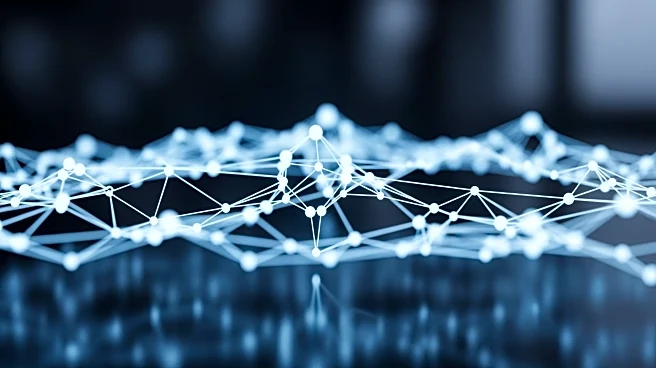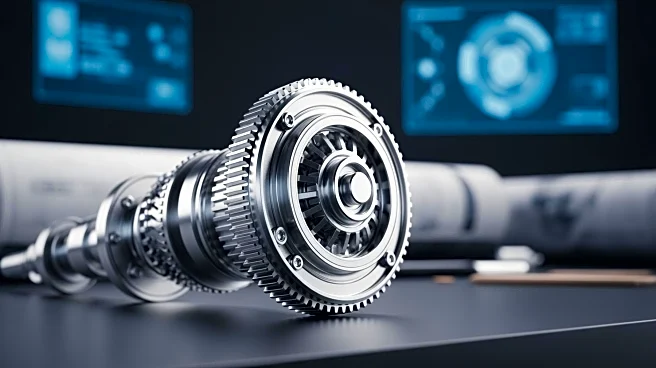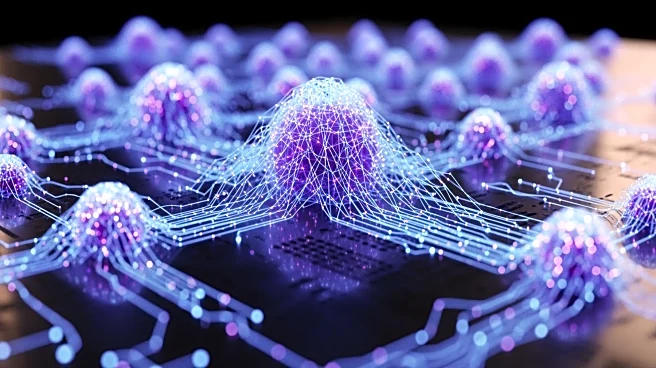What's Happening?
Recent advancements in machine learning (ML) have been applied to the analysis of nanodiamonds, focusing on their shape and surface classification through X-ray pattern analysis. This study highlights
the use of ML techniques, such as Random Forest, Neural Networks, and Extreme Gradient Boosting, to process diffraction data of nanocrystals. The research demonstrates that ML can independently discover relationships between objects, offering a significant advantage over traditional numeric techniques. The study utilized simulated diffraction data due to the scarcity of experimental data for nanomaterials with controlled particle sizes and shapes. The ML algorithms were trained on models of nanodiamonds, which were generated using molecular dynamics simulations to replicate realistic atomic structures. This approach allows for the recognition of nanoparticle shapes from diffraction data, providing a more efficient method for analyzing nanocrystals compared to conventional techniques.
Why It's Important?
The application of machine learning to nanodiamond analysis represents a significant step forward in the field of nanotechnology. By improving the accuracy and efficiency of shape and surface classification, this method could enhance the development of nanomaterials with specific properties for various industrial applications. The ability to process large datasets and derive meaningful insights from diffraction patterns can lead to better material design and optimization. This advancement is particularly relevant for industries relying on nanomaterials, such as electronics, pharmaceuticals, and materials science. The use of ML in this context could reduce the time and cost associated with traditional experimental methods, potentially accelerating innovation and application in these fields.
What's Next?
Future research may focus on expanding the dataset of nanomaterials to include a wider variety of shapes and sizes, further refining the ML algorithms for even greater accuracy. Additionally, collaborations between academic institutions and industry could facilitate the integration of these techniques into commercial applications. As the technology matures, it is likely that ML-based analysis will become a standard tool in the characterization of nanomaterials, driving further advancements in nanotechnology and its applications.
Beyond the Headlines
The use of machine learning in nanomaterial analysis also raises questions about the ethical implications of AI in scientific research. As ML algorithms become more prevalent, ensuring transparency and understanding of these systems will be crucial. Additionally, the reliance on simulated data highlights the need for continued development of experimental techniques to validate ML findings. The intersection of AI and nanotechnology presents both opportunities and challenges that will need to be navigated carefully.
